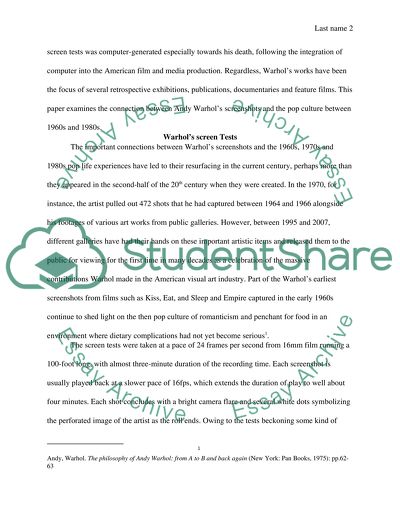Cite this document
(“Andy Warhol and His Screen Tests Essay Example | Topics and Well Written Essays - 2000 words”, n.d.)
Retrieved de https://studentshare.org/visual-arts-film-studies/1692077-andy-warhol-and-his-screen-tests
Retrieved de https://studentshare.org/visual-arts-film-studies/1692077-andy-warhol-and-his-screen-tests
(Andy Warhol and His Screen Tests Essay Example | Topics and Well Written Essays - 2000 Words)
https://studentshare.org/visual-arts-film-studies/1692077-andy-warhol-and-his-screen-tests.
https://studentshare.org/visual-arts-film-studies/1692077-andy-warhol-and-his-screen-tests.
“Andy Warhol and His Screen Tests Essay Example | Topics and Well Written Essays - 2000 Words”, n.d. https://studentshare.org/visual-arts-film-studies/1692077-andy-warhol-and-his-screen-tests.


